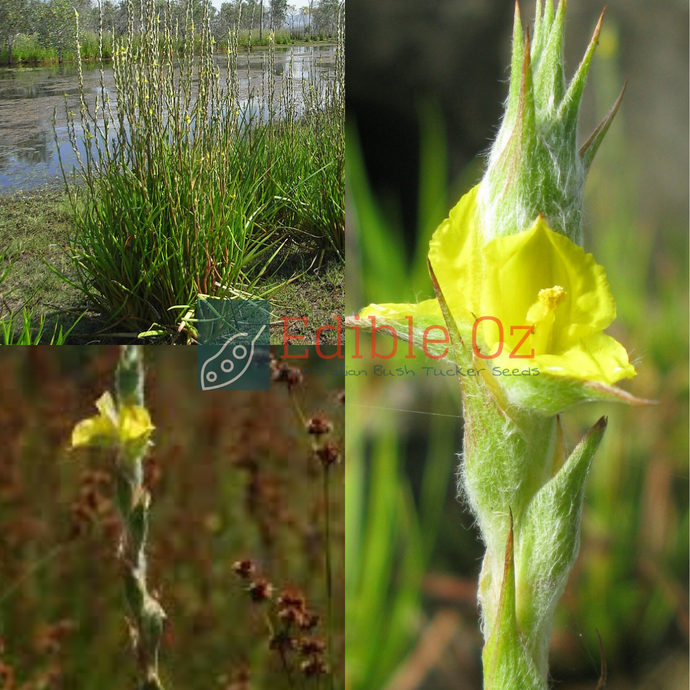
Woolly Frogsmouth - Philydrum lanuginosum (Woolly waterlillies) seeds
Regular price
$3.95
Sale
or make 4 interest-free payments of
$0.98 fortnightly with
 More info
More info
FROGMOUTHS / WOOLLY WATERLILIES
Scientific Name: Philydrum lanuginosum
Quick Facts
- Growth Habit: Herbaceous aquatic plant with fleshy, sword-like green leaves.
- Height: 0.5–1 meter.
- Flowers: Spikes of bright yellow, frog-mouth-shaped blooms during warmer months.
- Habitat: Margins of dams, bogs, creeks, and freshwater wetlands.
- Roots: Dense, fibrous root system ideal for stabilizing banks and preventing erosion.
- Wildlife Value: Provides habitat for frogs, food, and cover for birds, and attracts insects.
Why Grow Frogmouths?
- Ornamental Value: Striking yellow flowers add visual interest to water features and wetlands.
- Erosion Control: Dense root system stabilizes soil along water edges.
- Wildlife Habitat: Supports diverse ecosystems by offering shelter and food.
Bush Food Note
- Corms: Edible and versatile. Can be eaten raw, boiled, grilled, or pickled.
- Cultural Significance: Valued for its edible parts in traditional Indigenous diets.
How to Grow
Planting Tips
- Position: Full sun to part shade.
- Soil: Sandy or waterlogged soil; thrives in boggy or partially submerged conditions.
- Watering: Keep soil consistently wet or submerged.
Germination
-
Sowing Instructions:
- Sprinkle seeds onto a tray or pot of sandy soil.
- Place the tray in a few centimeters of water to mimic natural wetland conditions.
- Thoroughly water the seeds into the soil surface.
- Environment: Maintain consistent moisture; seeds thrive in a wet, sunny, or semi-shaded spot.
- Germination Time: Germination can occur within several weeks under ideal conditions.
Uses in Your Garden
- Water Gardens: Ideal for ponds, dams, or wetland landscaping.
- Ecosystem Support: Enhances biodiversity by attracting frogs, birds, and insects.
- Bank Stabilization: Prevents erosion with its strong root system.
Order Now
Transform your water features or wetlands with the vibrant beauty and ecological benefits of Philydrum lanuginosum. Its unique blooms, edible corms, and wildlife-friendly attributes make it an excellent addition to any native plant collection.
